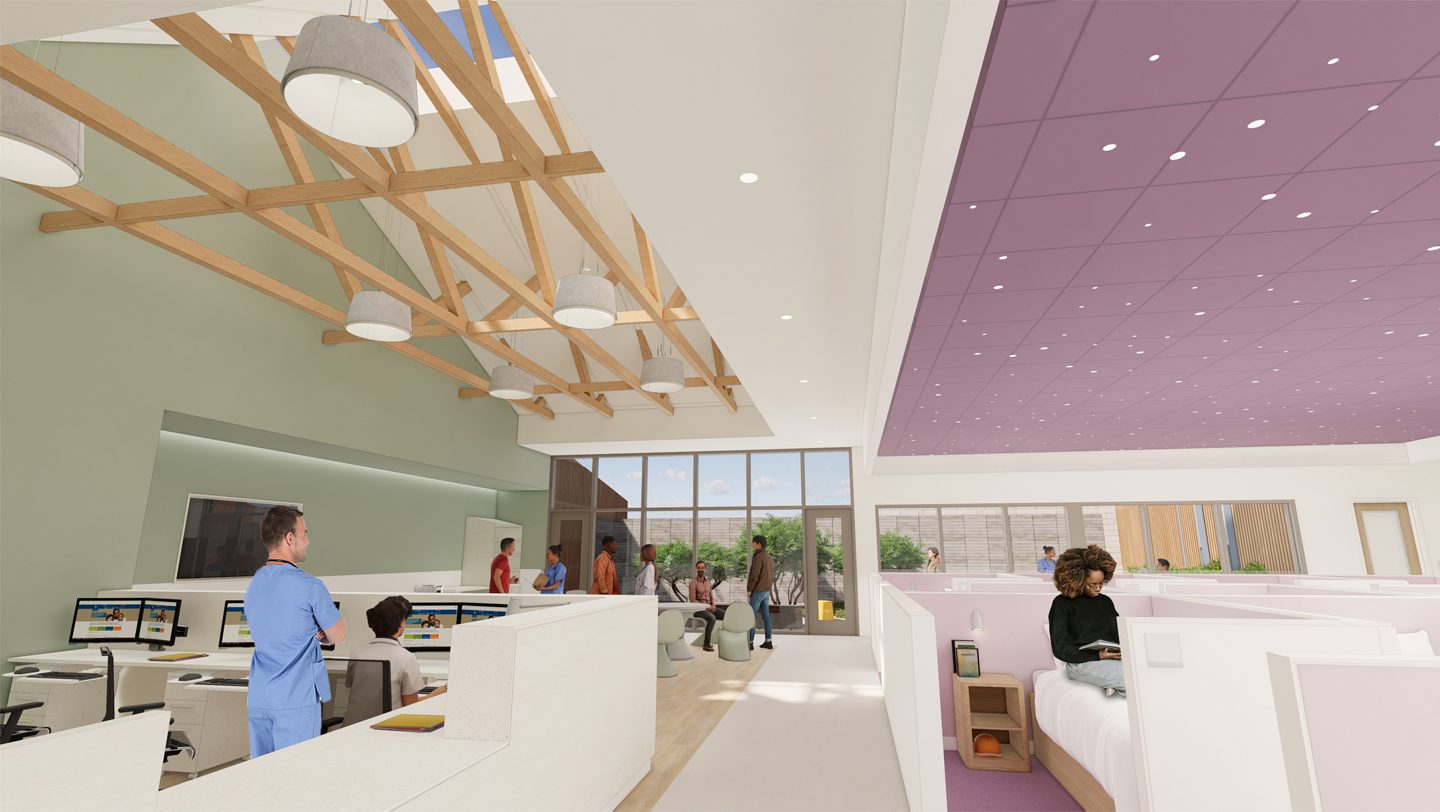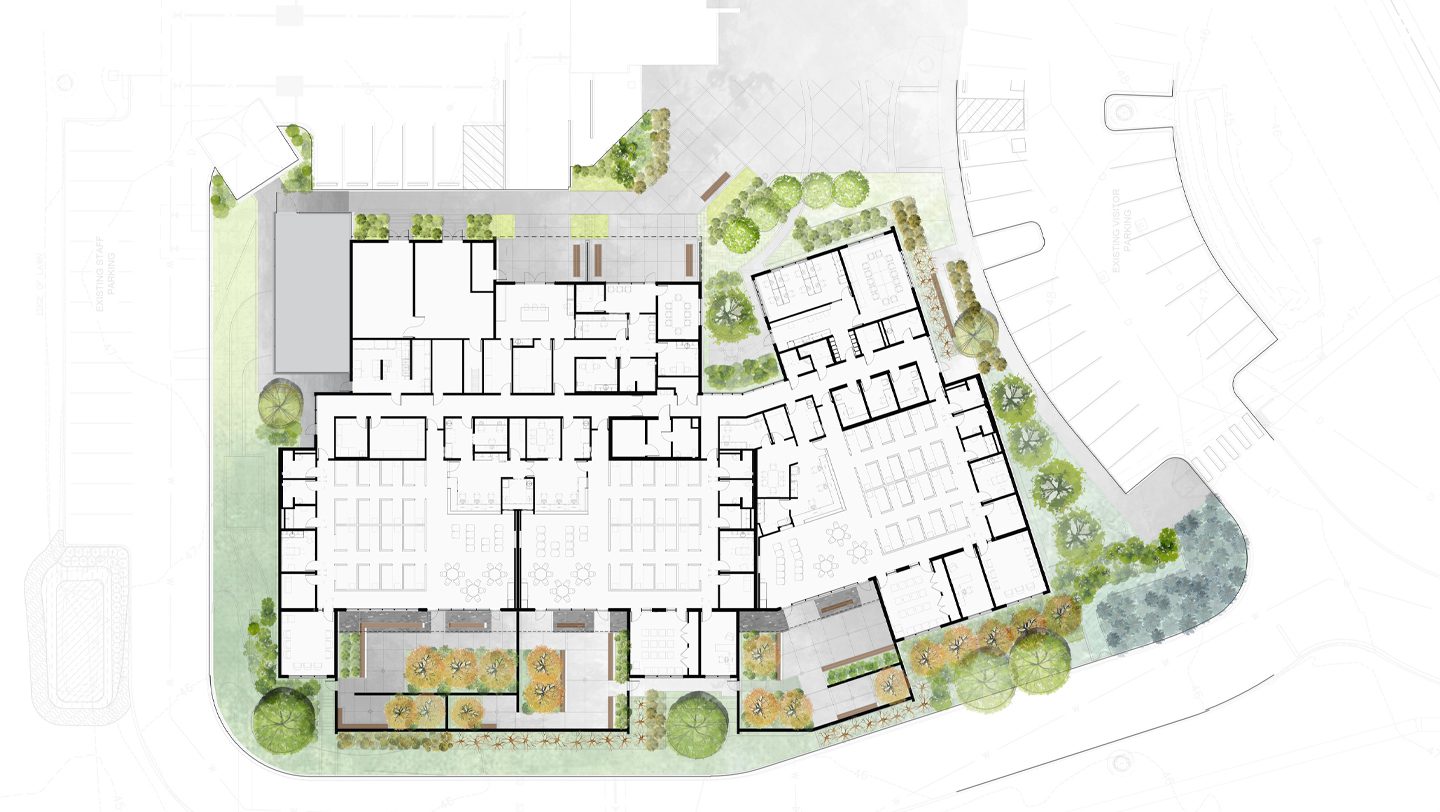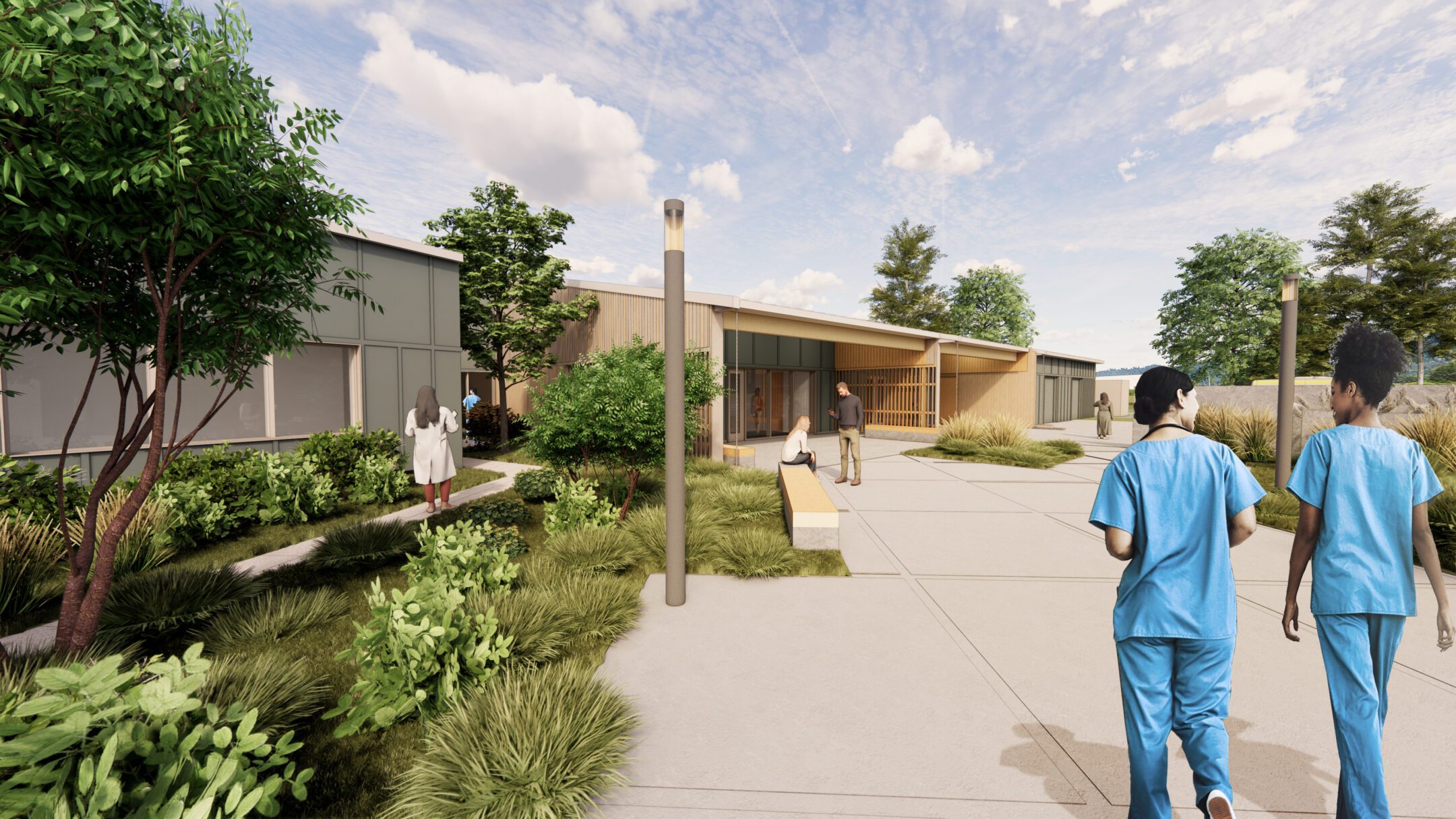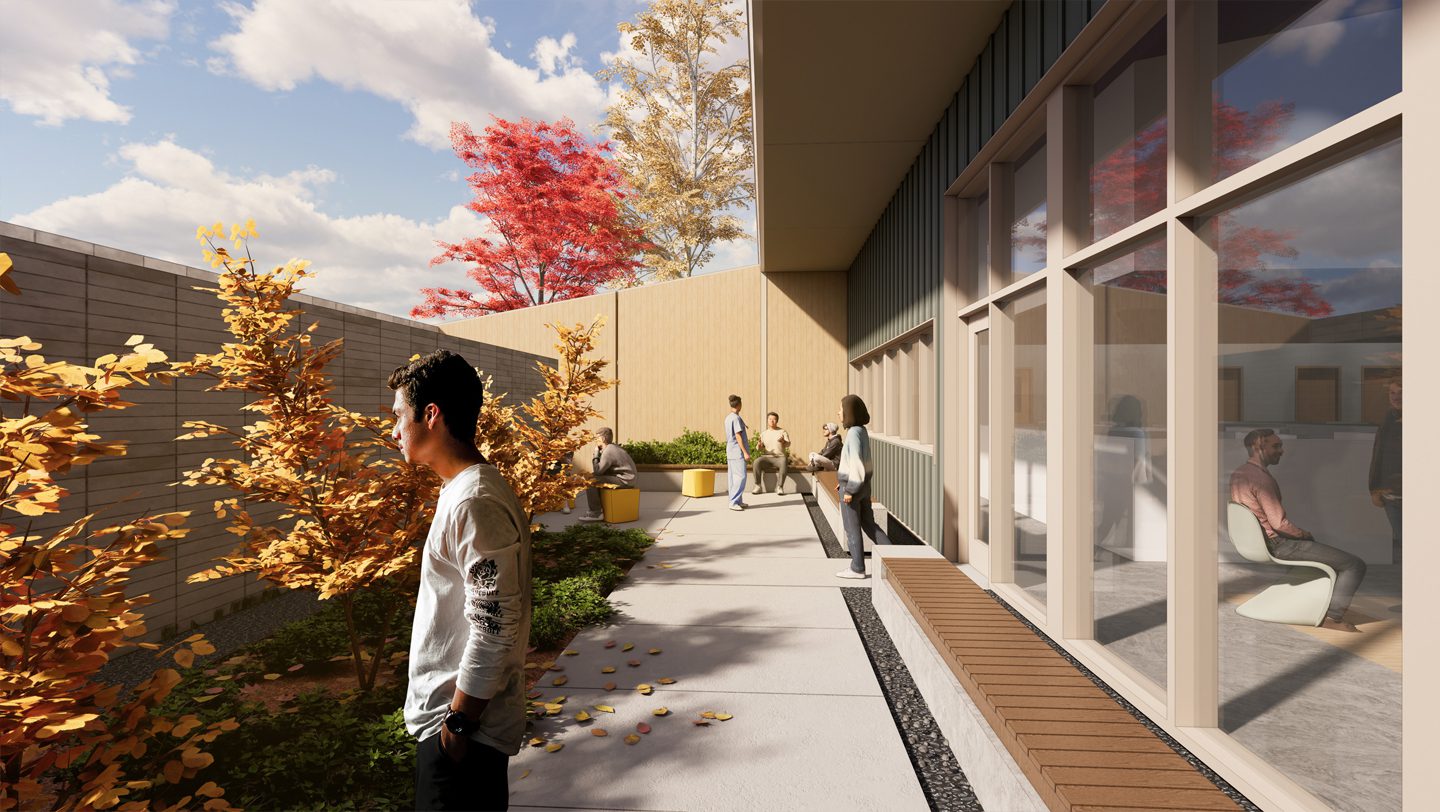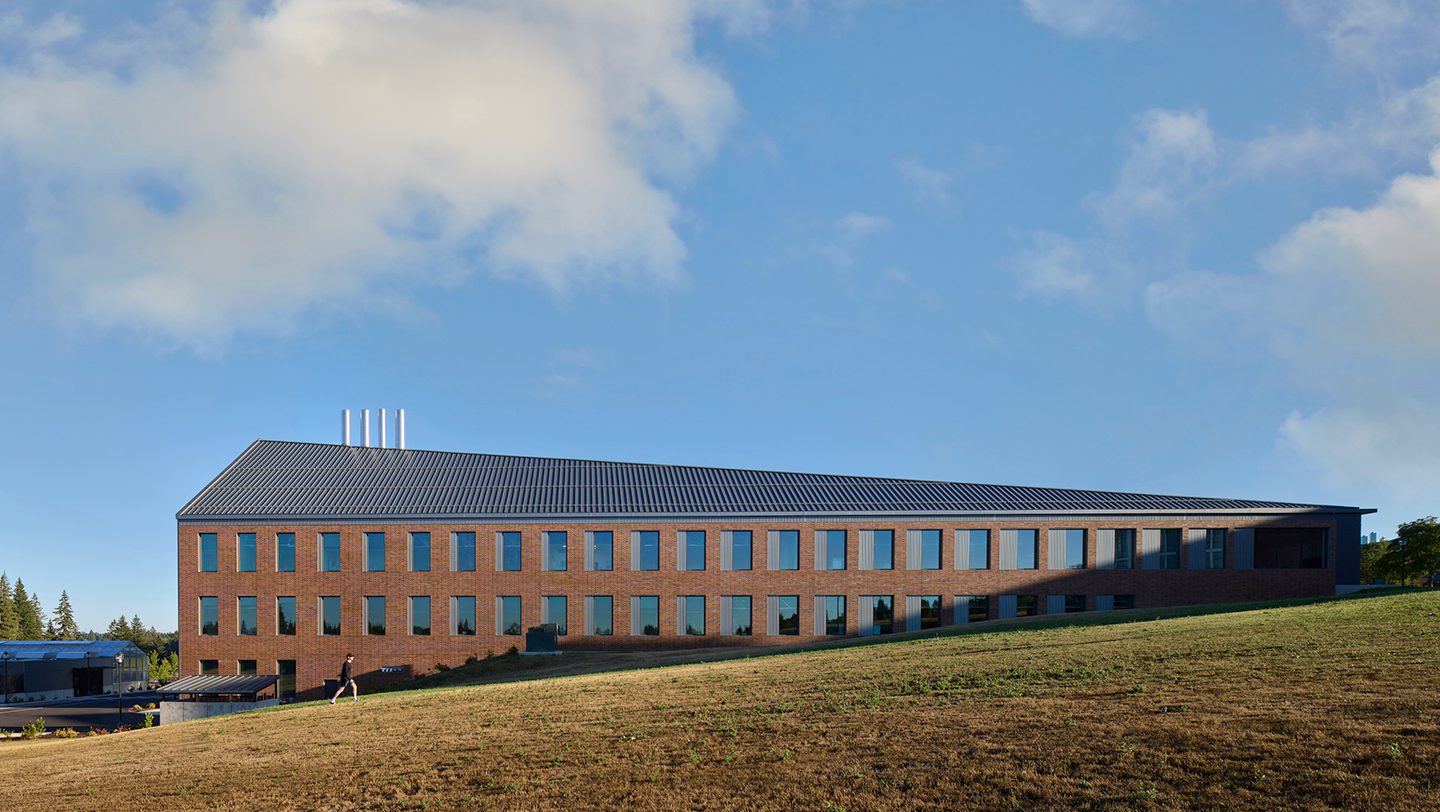Skagit County Crisis Stabilization Center breaks ground
We are proud to celebrate the recent groundbreaking for the Skagit County Crisis Stabilization Center in Sedro-Woolley, Washington. The center will house 48 voluntary, inpatient mental health beds, comprised of 16 crisis stabilization beds, 16 acute detox beds and 16 co-occurring treatment beds. The facility is expected to open in late 2025.
Reducing the stigma around mental health treatment starts by building trust and relationships within the community. SRG + CannonDesign is coordinating closely with Skagit county leadership to ensure the facility integrates effectively into existing care systems in the community. The Crisis Center is being built adjacent to the existing Evaluation and Treatment Center, which opened in 2022 and provides 16 beds for involuntary mental health crisis stabilization and prepares individuals to return home or to other community programs.
Together these two buildings comprise the Crisis Stabilization Campus for Skagit County, which came from advocacy from members of the North Star initiative, a public-private partnership between Skagit County, four local cities, housing and healthcare providers, first responders and other local leaders.
The Crisis Stabilization Center’s exterior compliments its surroundings, and visually integrates into the community like any other health and wellness facility. Exterior colors and finishes work in harmony with the landscape and reference the iconic surroundings of Skagit Valley’s farmhouses, wood barns and stone masonry. This non-institutional approach to materials and massing further destigmatizes the treatment the facility provides.
Care providers will also be supported in a peaceful environment that fosters connection and collaboration. Workspace will be accessible and flexible, and there are designated respite areas for staff both indoors and outdoors. Providing a comfortable and supportive work environment will build a sense of community and trust and improve staff retention.
Imbuing trauma‑informed design inside and out
Research into neurodiversity and trauma-informed design principles guided the design team to incorporate a neutral palette with accents of purple, green and wood tones to create a serene environment to ease stress.
Patients are provided with appropriate flexibility, choice and a sense of normalcy throughout their recovery and reintegration into the community. A variety of therapy rooms, both large and small, open activity zones and outdoor access provide choice for patients and care providers. Nurse stations are designed to be open based on patient acuity with a welcoming approach to supervision and engagement.
Staying grounded in Skagit Valley
Biophilic design principles are critical to improving cognitive functioning, stress levels, moods and overall health outcomes. Lack of daylight and views can be disorienting, making people anxious about how much time has passed and disconnected from natural cycles. Individuals experiencing substance abuse and mental health crises can especially benefit from a reintroduction to the rituals of daily life and the body’s natural circadian rhythms.
Views throughout the facility allow patients to experience things up close as well as in the distance, connecting them to direct light and the regular passage of time. Gracious windows with broad and distant views, views of the sky plus high ceilings in common areas and therapy rooms create a feeling of openness. The outdoor patio includes fixed seating, so patients can comfortably and safely experience therapy with all senses, from listening to the birds, to smelling the surrounding landscape and agriculture to feeling a crisp, green leaf on their fingertips.
This project was funded by Washington state and aims to be a cost-effective alternative to jail or the emergency room for those experiencing acute mental health crises. It will also be a place for emergency responders and law enforcement to bring individuals needing substance use detox. Skagit County is a rural county about 70 miles north of Seattle and home to about 131,000 people.
